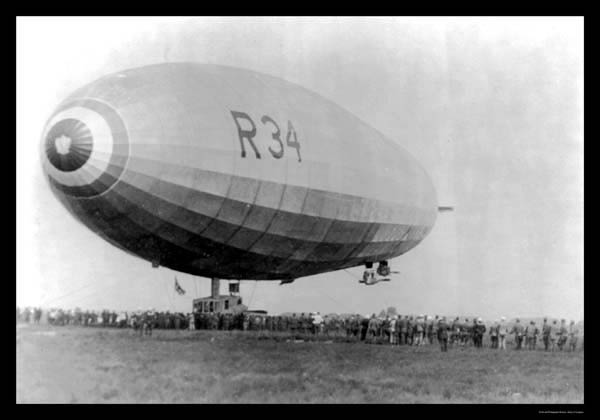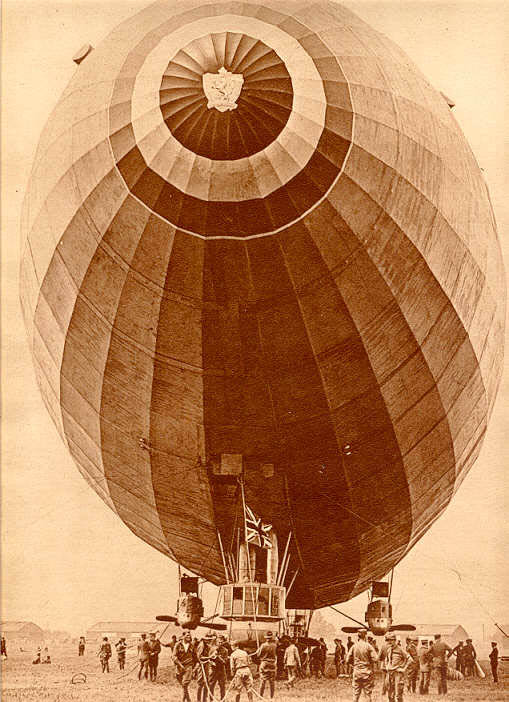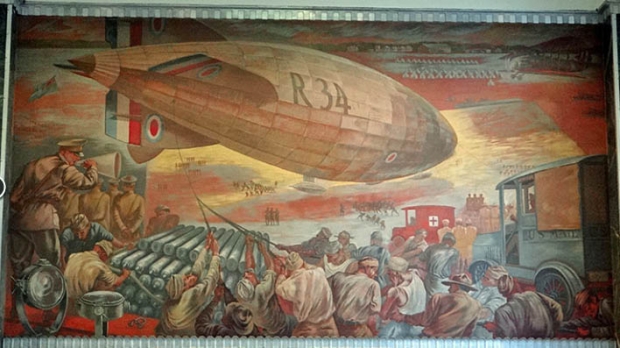The Landing of the R-34 in America
Before dawn on Sunday, with the fuel situation desperate, Major Scott, the R-34’s captain, radioed the US Navy: “Will land Montauk.”
Shortly after 4 AM, the crew of the airship spotted the distinctive outline of Cape Cod and at long last the rough weather began to abate and a following wind increased the ship’s ground speed.
Chief Engineer, Second Lieutenant J D Shotter, organized a foraging party to drain every last drop of fuel from the ship’s 80 fuel tanks. Armed with pots and pans and jars, the party drained the tanks until they were bone dry and poured the fuel directly into the gravity-fed tanks above the engines.
At 7:20 in the morning, the airship appeared over Montauk. With only 90 miles to go, Scott decided to press on to Roosevelt Field in Mineola — the R-34’s original destination. And make it, she did. Thanks to Lieutenant Schotter’s foraging party. In fact, enough fuel had been collected to enable the giant airship to fly for another two hours at full speed.
When the R-34 appeared over Roosevelt Field, on the ground was a huge crowd of spectators and 500 military police to control them and 1000 men from the US Navy’s Air Service. However, a rigid airship had never been to America before and there was no experienced officer to direct the landing. The British team that was supposed to be on hand had gone to Boston when it was thought the airship would make a fuel stop in Massachusetts.
The decision was made for Major J E M Prichard to parachute to the ground and direct the landing operation. He landed heavily and in doing so became the first person to arrive in America by air. He was instantly mobbed by reporters, one of whom asked, “Can you tell us what your first impressions of America are, sir?” Prichard responded, “Hard.” He then rode off on a motorbike to direct the landing of the airship.
When the R-34 finally came down at 9:54 AM that Sunday morning, the 6th of July 1919, she’d been in the air 108 hours and 12 minutes — setting a new endurance record. General Maitland recorded, “We couldn’t have cut it much finer.”
The R-34 in Mineola, NY
The R-34 was the first aircraft to make the difficult east-west crossing of the Atlantic. Just a few weeks earlier, Alcock and Brown, in a Vickers Vimy, had made the west-east flight. But clearly in 1919 the way of the future was the airship. Alcock and Brown flew in an open cockpit, at times upside down, had flown a shorter distance, and ended up nose first in an Irish bog.
The R-34 carried 31 men in relative comfort, flown through weather no airplane could, and had arrived at their destination intact. And at the time had made the crossing no airplane could — flying from Europe to America. It wasn’t until 1938 that a specially modified version of the Focke-Wulf Condor made the first non-stop flight from Berlin to New York City. Airships had been making regular non-stop flights for years by then.
In my research, I came across this wonderful site — Vanderbilt Cup Races — which has loads of pictures and video of the R-34. Do take a look. It’s fabulous.
The second video is labeled an unknown field; however, I’d guess it was the R-34’s homecoming since the ground crew was walking her into her shed.
Today, when air travel is taken for granted, it’s difficult to imagine the euphoria created by the flight of the R-34. True, it was an airplane that made the first non-stop flight across the Atlantic — but that flight did nothing to inspire dreams of air travel, the air travel we all now take for granted. It was the flight of the R-34 that fueled the dream of the possible that eventually became reality.
Stay tuned! There’s more to come! After all, the R-34 has to now fly home. Until next time, keep your eyes to the sky! The zeppelins are coming!
Peppino Mangravite mural of R-34’s landing.
Located in the US Post Office in Hempstead, NY.


